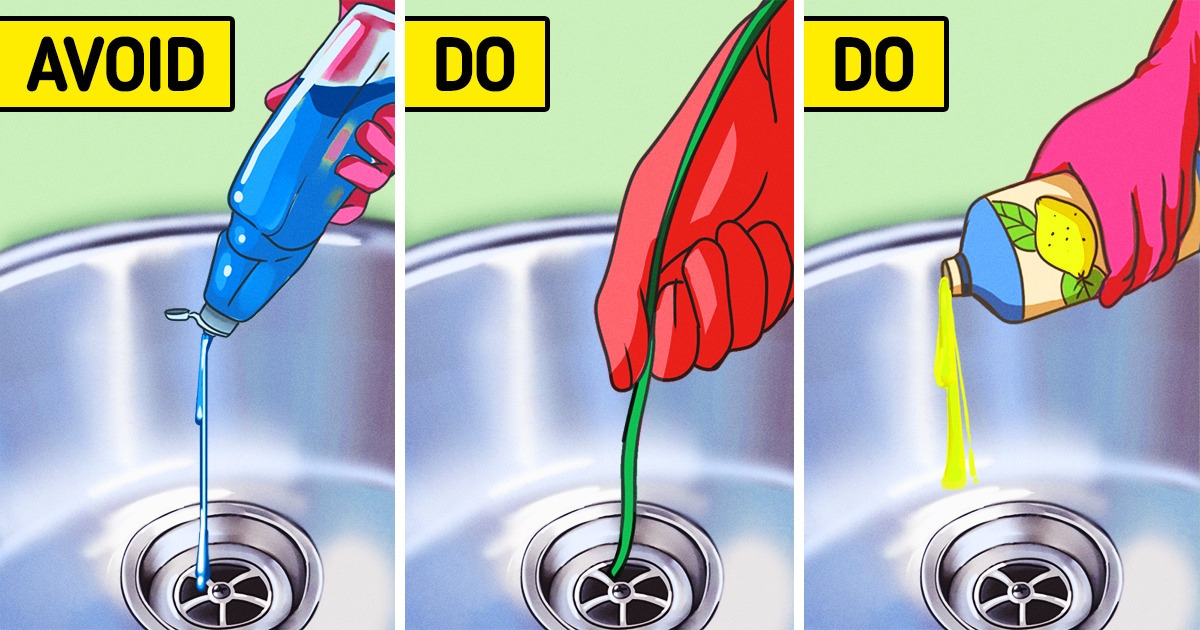
9 Ways to Finally Unclog Your Sink Drain

Sink drain clogs are an annoying problem that everyone experiences at some point, even those who are incredibly careful about the things they put down the drain. But you don’t have to call a plumber right away and can try to get rid of the blockage yourself using certain remedies at hand. And 5-Minute Crafts will show you 9 easy ways to make your kitchen sink work like new.
Note: Before trying any of the methods described below, remove as much water as possible from the sink.
1. Add boiling water.
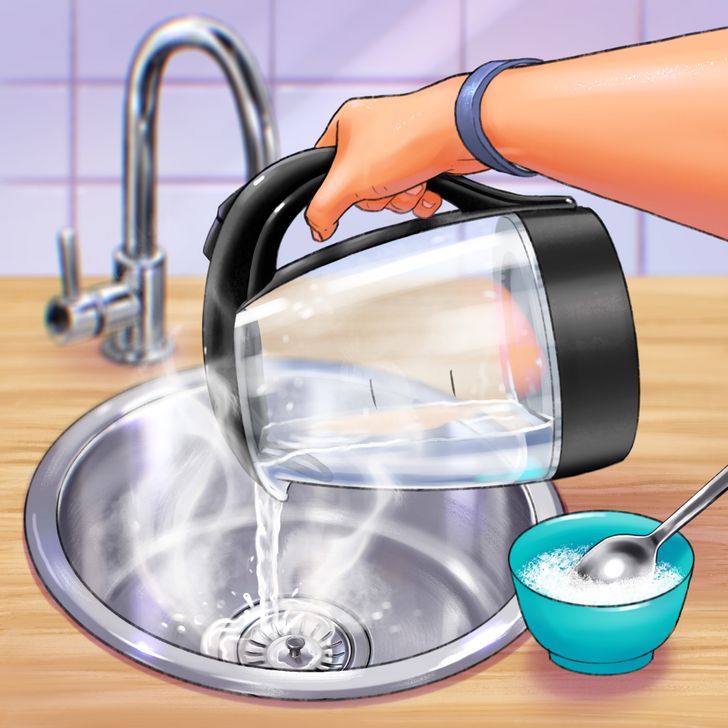
? Boil a kettle of water and pour it down the drain. Leave for some time.
? If you see that the water doesn’t move down and the clog is still in place, wait for the water to cool down, remove it, and repeat the process again.
Note: You can pour a half cup of salt down the drain before adding boiling water. Let the mixture sit in the drain for a few minutes and then clear the clog with hot running water.
Don’t use boiling water if you have plastic pipes!
2. Try a baking soda and vinegar mixture.
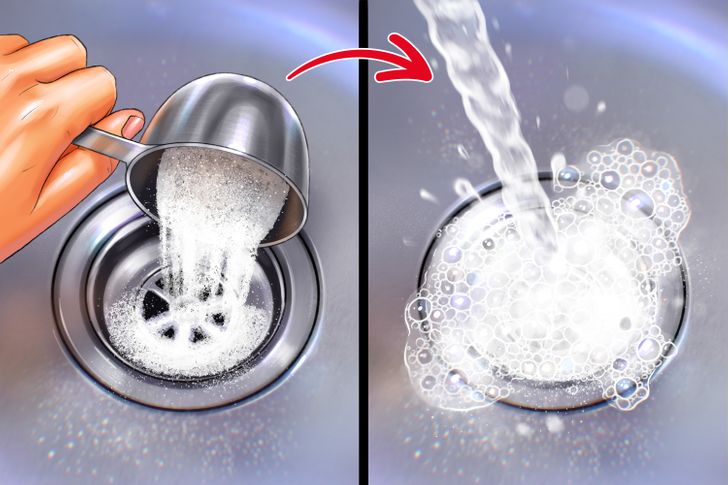
? Add a cup of baking soda to the drain. Your goal is to make as much baking soda end up down the drain as possible. You can use any tools, like a spoon, if necessary.
? Pour a cup of vinegar over it. The solution should start to bubble.
? Cover the drain with a plug and wait for 15 minutes.
? Pour hot water into the drain to see if the clog has been removed. You can repeat this process several times if needed.
3. Go for a dish soap and hot water mixture.
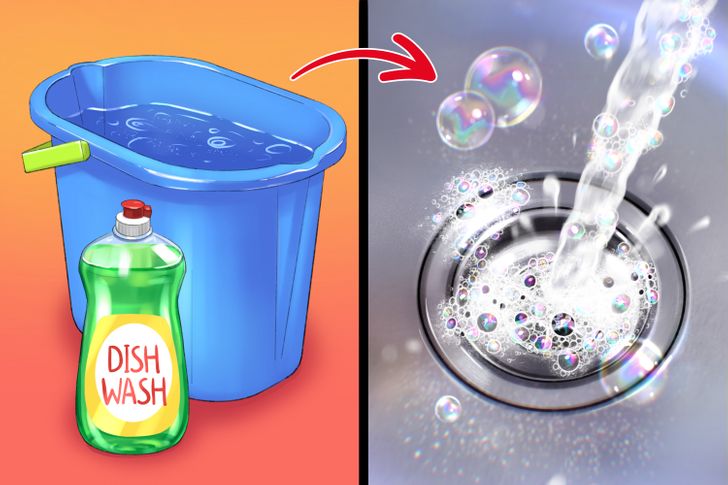
? Boil half a gallon of water and add a couple of tablespoons of liquid dish soap to it. Mix it well.
? Pour this hot mixture down the drain.
? Turn on the water to see if the clog has dissipated. Repeat the process is necessary. This method works best for grease clogs.
4. Add a baking soda and salt mixture.
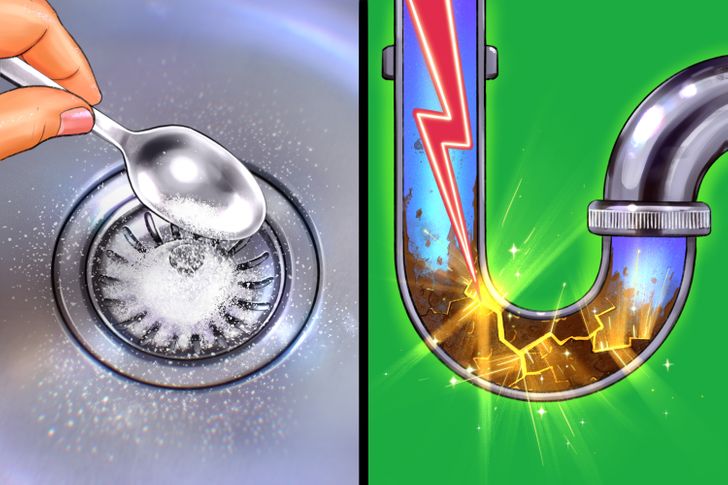
? Mix half a cup of baking soda and half a cup of salt.
? Pour the mixture down the drain.
? Let the mixture sit there for at least 30 minutes. You can leave the mixture overnight.
? Pour boiling water down the drain to remove the mixture and get rid of the clog. Repeat the process if necessary.
5. Make a plumber’s snake out of a wire hanger.
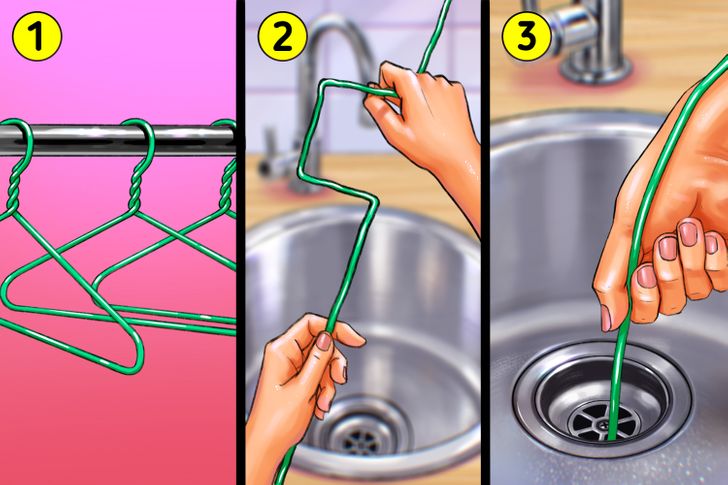
? You can use a plumber’s snake to remove any clogs, especially if they’re deep down the drain. But if you don’t have one on hand, use a wire hanger instead. Just be careful not to scratch your sink with it.
? Take a wire hanger, untwist it with pliers, and straighten it.
? Make a hanger at one end of the wire with pliers.
? Put the straight end of the tool down the drain and rotate it in a clockwise motion to remove the clog.
6. Go for a caustic soda solution.
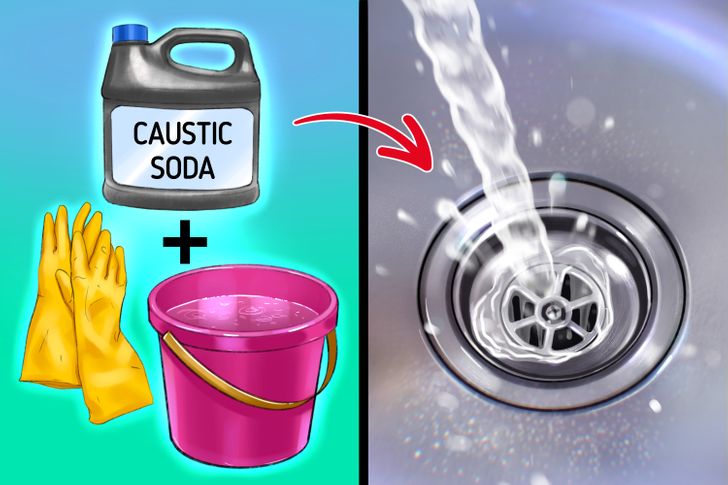
Note: Be very careful with caustic soda because it can leave chemical burns on the skin. Always use rubber gloves and protect your eyes.
? Pour 3/4 gallon of water into a bucket and add 3 cups of caustic soda to it. Stir it well with a wooden spoon. The mixture should start to heat up.
? Pour it into the drain and wait for 20-30 minutes.
? Pour boiling water down the drain to completely remove the clog. Repeat if necessary.
7. Use a plunger.
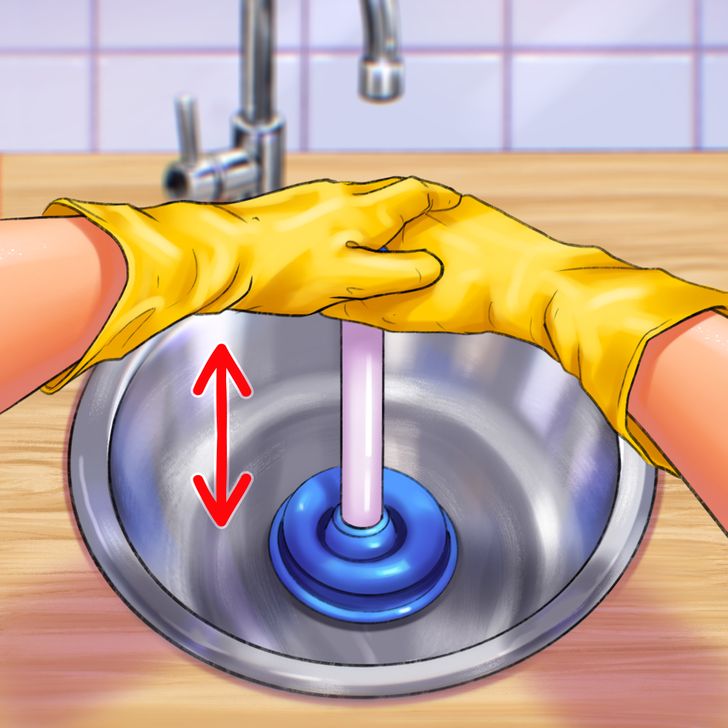
? First, make sure you block the overflow opening with a wet rag. You need to do this so that the plunger can create the proper suction.
? Grab a plunger and place it over the drain so that it covers the opening fully. If necessary, add some water — it should cover the cup of the plunger.
? Plunge several times to remove the clog. You may actually feel the moment when the clog starts to loosen up because it may become easier to move the plunger.
? When you’re done, remove the plunger and turn on the water to check if the clog has been removed.
8. Remove and clean the P-trap.
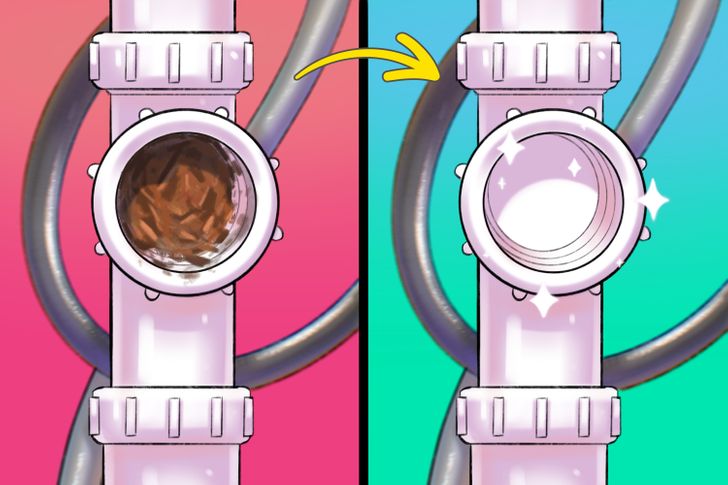
? If the methods described above don’t work, try to remove the clog from the P-trap with your hands.
? First, remove the water from the sink. Be ready for the remaining water to go down the drain when you remove the clog. Because of this, it’s better to have a couple of towels on hand.
? Find the P-trap. It’s a curved pipe that is located under your sink. Loosen the nuts to remove the P-trap.
? Remove the P-trap and clean the blockage. Wash it with hot water to get rid of any grease.
? Install the P-trap back in place.
9. Use a wet and dry vacuum cleaner.
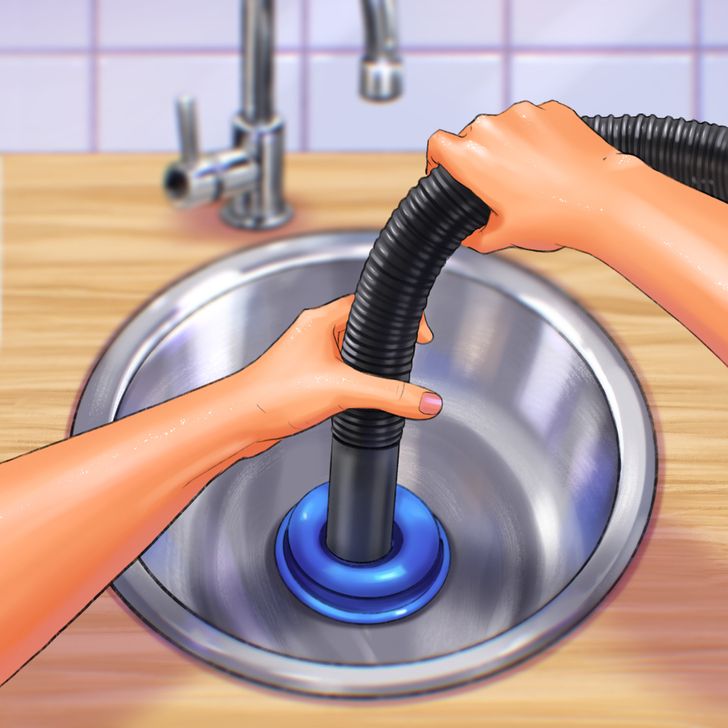
Note: This trick works only with wet and dry vacuum cleaners. You may also need someone to help you switch the machine on and off.
? Take a hose and insert it into the drain. It’s better to use a special cup that’s like a plunger for better suction. You can buy it or make it yourself from a regular plunger.
? Switch the vacuum cleaner on and wait for the clog to loosen up. Pay attention to the sound — if the clog is still there, it’ll be different from the sound the machine makes when it’s just sucking air.
? Vacuum until you remove the clot (the sound should change when that happens). Make sure you don’t vacuum for too long as not to damage the pipes or the vacuum cleaner. You can try to imitate the plunger’s movements to speed the unclogging process. Just be careful not to crack the pipes.
? Turn off the vacuum cleaner and turn on the hot water to check if the blockage is gone.
? Be careful and use this method only as a last resort.